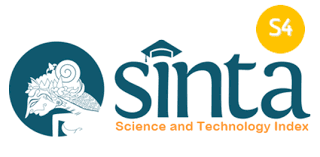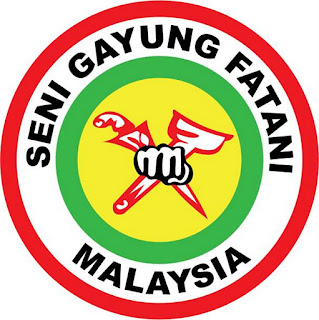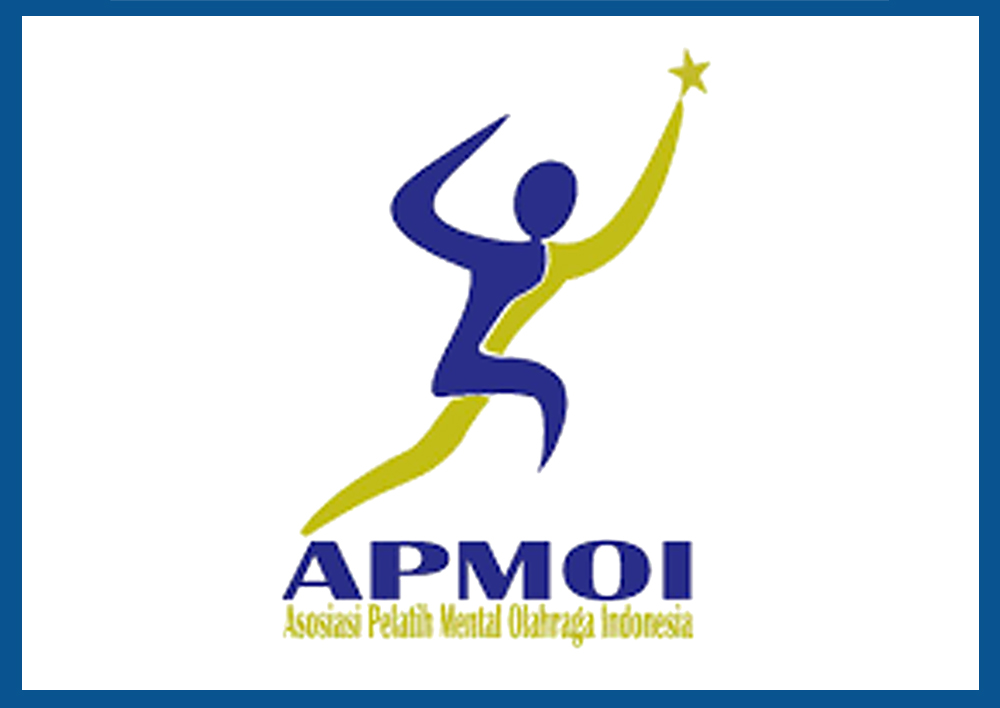Does extracurricular sports have an impact on quality of life?
Abstract
Problems: Extracurricular sports activities at school are activities outside of school that are the only physical activities carried out regularly every week and are expected to have a significant impact on the quality of life of teenagers, considering the low quality of life in society. Purpose: To reveal the impact of extracurricular sports activities on the quality of life of high school students. Methods: This research uses a descriptive approach, namely by conducting a survey about the quality of life of high school students. This research involved 332 respondents, coming from schools in the northern part of West Java and with active student status. The instrument used is the WHOQOL-BREF quality of life questionnaire developed by the World Health Organization, consisting of four indicators: physical health, social relationships, psychology, and the environment. Results: The results of the analysis show that extracurricular sports have a significant impact on the quality of life of high school students. It is an interesting finding that participating in extracurricular sports at school contributes positively to improving students' quality of life. Conclusion: The role of extracurricular activities in schools is very important for improving students' skills, increasing their motivation, increasing their potential based on interests and talents, and improving the quality of life. It is hoped that this can be a recommendation for related parties to socialize for extracurricular activities more often in the school environment.
Downloads
References
Baciu, C., & Baciu, A. M. (2015). ScienceDirect International conference “ Education , Reflection , Development ” , ERD 2015 , 3-4 July 2015 , Cluj-Napoca , Romania QUALITY OF LIFE AND STUDENTS ` SOCIALIZATION THROUGH SPORT. https://api.semanticscholar.org/CorpusID:146445774
Bocarro, J. N., Kanters, M. A., Casper, J. M., & Forrester, S. A. (2008). School Physical Education, Extracurricular Sports, and Lifelong Active Living. Journal of Teaching in Physical Education, 27, 155–166. https://api.semanticscholar.org/CorpusID:45023693
Bondar, A., Pidluzhniak, О., Dus, S., & Kulyk, D. (2023). Modern approaches to determining the impact of physical activity on the psychological health of students in wartime. Scientific Journal of National Pedagogical Dragomanov University. Series 15. Scientific and Pedagogical Problems of Physical Culture (Physical Culture and Sports). https://api.semanticscholar.org/CorpusID:259968459
Borukova, M., & Kuleva, M. (2021). Extracurricular activities in physical education and sports at school in the Covid-19 conditions. Strategies for Policy in Science and Education-Strategii Na Obrazovatelnata i Nauchnata Politika. https://api.semanticscholar.org/CorpusID:244175254
Buleno, I., Nelwan, J. E., Runtuwene, J., Manampiring, A. E., & Ratag, G. A. E. (2021). Kualitas Hidup Remaja di Kotamobagu Sulawesi Utara pada Masa Pandemi Coronavirus Disease 2019. HEALTH CARE : JURNAL KESEHATAN. https://api.semanticscholar.org/CorpusID:246496963
Del Din, S., Galna, B., Lord, S., Nieuwboer, A., Bekkers, E. M. J., Pelosin, E., Avanzino, L., Bloem, B. R., Olde Rikkert, M. G. M., Nieuwhof, F., Cereatti, A., Della Croce, U., Mirelman, A., Hausdorff, J. M., & Rochester, L. (2020). Falls Risk in Relation to Activity Exposure in High-Risk Older Adults. The Journals of Gerontology. Series A, Biological Sciences and Medical Sciences, 75(6), 1198–1205. https://doi.org/10.1093/gerona/glaa007
Dubey, V. P., Kievi\vsienė, J., Rauckiene-Michealsson, A., Norkiene, S., Razbadauskas, A., & Agostinis-Sobrinho, C. (2022). Bullying and Health Related Quality of Life among Adolescents—A Systematic Review. Children, 9. https://api.semanticscholar.org/CorpusID:249075285
Efendy, A. W. P., & Devi, P. A. R. (2022). Penentuan Kegiatan Ektrakulikuler Sesuai Bidang Olahraga Berdasarkan Minat dan Bakat Siswa Menggunakan Metode Profile Matching. JURIKOM (Jurnal Riset Komputer). https://api.semanticscholar.org/CorpusID:255638073
Ellingson, T., & Conn, V. S. (2000). Exercise and quality of life in elderly individuals. Journal of Gerontological Nursing, 26 3, 17–25. https://api.semanticscholar.org/CorpusID:21958838
Felfe, C., Lechner, M., & Steinmayr, A. (2011). Sports and Child Development. PLoS ONE, 11. https://api.semanticscholar.org/CorpusID:14780177
Fischer-Grote, L., Kothgassner, O. D., & Felnhofer, A. (2020). The impact of problematic smartphone use on children’s and adolescents’ quality of life: A systematic review. Acta Paediatrica (Oslo, Norway : 1992), 110, 1417–1424. https://api.semanticscholar.org/CorpusID:228101308
Gumilar, A. (2024). Positive Youth Development: Integrasi Kecakapan Hidup dalam Olahraga Softball.
Gumilar, A., Ma’mum, A., Nuryadi, Kusumah, J. D. N., & Hambali, B. (2022). Can a Healthy Lifestyle Reduce Feelings of Anxiety during the COVID-19 Pandemic? Universal Journal of Public Health, 10(6), 620–626. https://doi.org/10.13189/ujph.2022.100609
Gumilar, A., Ma’Mun, A., Nuryadi, N., KN, J. D., & Hambali, B. (2023). Kecakapan hidup atlet softball remaja. Jurnal Patriot, 5(4), 177–185. https://doi.org/https://doi.org/10.24036/patriot.v5i4.1012
Ilaria, V., & Emanuela, R. (2019). Elements and Methods of Organization, Design and Management of Extracurricular Sports Activities. Journal of Physical Education and Sport, 19, 1767. https://api.semanticscholar.org/CorpusID:220631540
Jeong, H. S. (2004). A Study on the Relations Between Physical Exercise and Quality of Life in Middle-aged Adults. Journal of Korean Public Health Nursing, 18, 14–26. https://api.semanticscholar.org/CorpusID:68671568
Kanters, M. A., Bocarro, J. N., Edwards, M. B., Casper, J. M., & Floyd, M. F. (2013). School Sport Participation Under Two School Sport Policies: Comparisons by Race/Ethnicity, Gender, and Socioeconomic Status. Annals of Behavioral Medicine, 45, 113–121. https://api.semanticscholar.org/CorpusID:3659707
Kokka, I., Mourikis, I., Nicolaides, N. C., Darviri, C., Chrousos, G. P., Kanaka-Gantenbein, C., & Bacopoulou, F. (2021). Exploring the Effects of Problematic Internet Use on Adolescent Sleep: A Systematic Review. International Journal of Environmental Research and Public Health, 18. https://api.semanticscholar.org/CorpusID:231680038
Matsumura, Y., Tabusadani, M., Yamane, K., Takao, S., Kuroyama, Y., Mori, K., Ono, K., Kawahara, K., Omatsu, S., Furuuchi, K., Fujiwara, K., Morimoto, K., Kimura, H., & Senjyu, H. (2022). Prevalence of and risk factors for depressive symptoms in non-tuberculous mycobacterial pulmonary disease. The International Journal of Tuberculosis and Lung Disease : The Official Journal of the International Union against Tuberculosis and Lung Disease, 26(4), 310–316. https://doi.org/10.5588/ijtld.21.0527
Montiel, I., Ortega-Barón, J., Basterra-González, A., González-Cabrera, J. M., & Machimbarrena, J. M. (2021). Problematic online gambling among adolescents: A systematic review about prevalence and related measurement issues. Journal of Behavioral Addictions, 10, 566–586. https://api.semanticscholar.org/CorpusID:237608867
Mutmainnah, Kasmad, R., & Husnul, D. (2020). The Relationship of the Insomnia Degree With Smoking Habit Overtraining. Proceedings of the 3rd International Conference on Education, Science, and Technology (ICEST 2019). https://api.semanticscholar.org/CorpusID:229243854
Negara, J. D. K. (2019). Pengaruh Frekuensi Olahraga Futsal terhadap Kebugaran Jasmani, Neuroplastisitas, Stres Fisik dan Stres Oksidatif. Kajian terhadap Komponen Kebugaran Jasmani, Atensi, Memori, Kadar BDNF, IGF-1, Kortisol dan MDA= Effect of the frequency of futsal sport on p.
Neil-Sztramko, S. E., Caldwell, H. A. T., & Dobbins, M. (2021). School-based physical activity programs for promoting physical activity and fitness in children and adolescents aged 6 to 18. The Cochrane Database of Systematic Reviews, 9, CD007651. https://api.semanticscholar.org/CorpusID:237615094
Nuryadi, N., Darajat Kusumanegara, J., Angkawidjaja, L., Gumilar, A., & Ubad Abdullah, C. (2019). RESPONSE OF CORTISOL HORMONE TO STUDENTS’ ANXIETY AND FOCUS. Journal of Engineering Science and Technology, 14(6), 3185–3193.
Nuryadi, N., Negara, J. D. K., Juliantine, T., Slamet, S., & Gumilar, A. (2018). Hubungan Kebugaran Jasmani dengan Kemampuan Konsentrasi dan Respon Kortisol. Jurnal Pendidikan Jasmani Dan Olahraga, 3(2), 122–128.
Organization, W. H. (2013). WHOQOL: measuring quality of life. Geneva: WHO; 1997. MAS/MNH/PSF/97.4.
Owen, K. B., Foley, B. C., Wilhite, K., Booker, B., Lonsdale, C., & Reece, L. J. (2021). Sport Participation and Academic Performance in Children and Adolescents: A Systematic Review and Meta-analysis. Medicine & Science in Sports & Exercise, 54, 299–306. https://api.semanticscholar.org/CorpusID:237627695
Pál, J. (2018). How is participation in sports related to students’ performance and well-being? PISA in Focus. https://api.semanticscholar.org/CorpusID:149989194
Pérez-Ordás, R., Cebamanos, M. A., Nuviala, R., & Nuviala, A. (2019). Evaluation of Extracurricular Sports Activities as an Educational Element for Sustainable Development in Educational Institutions. Sustainability. https://api.semanticscholar.org/CorpusID:197777165
Pomohaci, M., & Sopa, I. S. (2017). Extracurricular sport activities and their importance in children socialization and integration process. Scientific Bulletin, 22(1), 46–59.
Pucci, G., Rech, C. R., Fermino, R. C., & Reis, R. S. (2012). Association between physical activity and quality of life in adults. Revista de Saude Publica, 46 1, 166–179. https://api.semanticscholar.org/CorpusID:9977371
Rizkillah, R., Hastuti, D. T., & Defina, D. (2023). Pengaruh Karakteristik Remaja dan Keluarga, serta Gaya Pengasuhan Orang Tua terhadap Kualitas Hidup Remaja di Wilayah Pesisir. Jurnal Ilmu Keluarga Dan Konsumen. https://api.semanticscholar.org/CorpusID:257579303
Rodríguez-Fernández, A., Zuazagoitia-Rey-Baltar, A., & Ramos-Díaz, E. (2017). Quality of Life and Physical Activity: Their Relationship with Physical and Psychological Well-Being. https://api.semanticscholar.org/CorpusID:96454479
Rusina, S. (2018). Quality of life for teenagers with social deprivation. Psychosomatic Medicine and General Practice. https://api.semanticscholar.org/CorpusID:149776055
Skevington, S. M., Lotfy, M., & O’Connell, K. A. (2004). The World Health Organization’s WHOQOL-BREF quality of life assessment: psychometric properties and results of the international field trial. A report from the WHOQOL group. Quality of Life Research, 13, 299–310.
Spilková, J., & Dzúrová, D. (2012). The Quality of Life and Risk Behavior of Teenagers in the Mirror of the ESPAD Data. Procedia - Social and Behavioral Sciences, 35, 237–244. https://api.semanticscholar.org/CorpusID:145218134
Strozenko, L. A., Lobanov, Y. F., Bishevskaya, N. K., Tekutieva, N., & Miller, V. E. (2020). GENDER-SPECIFIC QUALITY OF LIFE FOR ADOLESCENTS. Health, Physical Culture and Sports. https://api.semanticscholar.org/CorpusID:226662425
Wang, G.-H., Li, W.-D., & Dou, K. (2020). Extracurricular sports participation increases life satisfaction among Chinese adolescents: A moderated mediation model. Social Behavior and Personality: An International Journal, 48(8), 1–11.
Wang, M. (2019). Researches on the Relationship between KAP of Physical Exercise and Life Quality of Female College Students. Proceedings of the 2019 3rd International Conference on Economic Development and Education Management (ICEDEM 2019). https://api.semanticscholar.org/CorpusID:204964866
Copyright (c) 2024 Jurnal Patriot

This work is licensed under a Creative Commons Attribution-ShareAlike 4.0 International License.



_(700_x_400_mm)_(3)_.png)


_(700_x_400_mm)_1.png)



